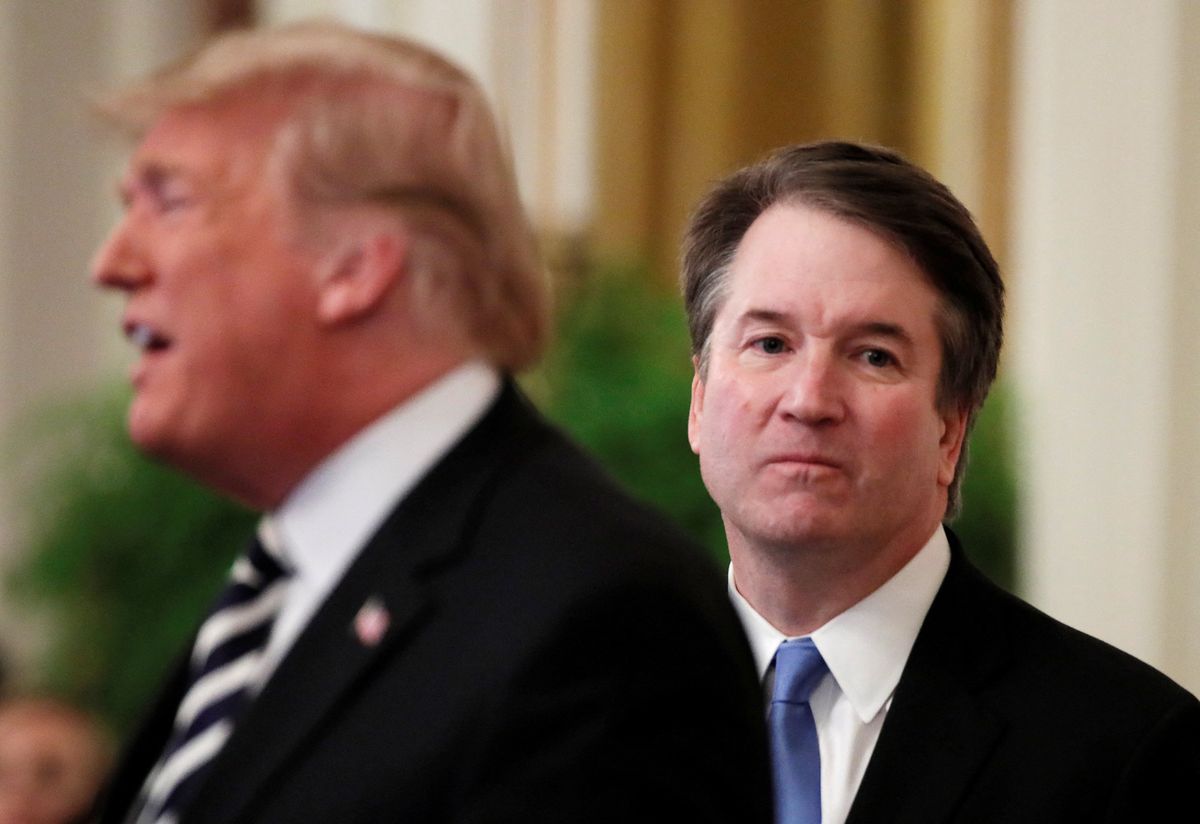
Supreme Court Justice Brett Kavanaugh is drawing pushback for brushing aside concerns about civil rights abuses by immigration agents in this week's controversial ruling that clears the way for racial profiling.
The Donald Trump appointee turned in a 10-page concurrence in the conservative majority's otherwise unexplained decision to allow Immigration and Customs Enforcement officers to continue their "roving" patrols in Southern California, but CNN reported that legal experts were baffled by Kavanaugh's "breezy suggestion" that Americans can simply sue the masked agents who rough them up.
“To the extent that excessive force has been used,” Kavanaugh wrote in his concurrence, “the Fourth Amendment prohibits such action, and remedies should be available in federal court.”
However, experts pointed to a series of recent decisions, including two that covered incidents at the border, the Supreme Court has sharply curtailed the ability of individuals to sue federal law enforcement officers over excessive force claims, and Kavanaugh himself joined the majority in those rulings.
“It’s bordering on impossible to get any sort of remedy in a federal court when a federal officer violates federal rights,” said Patrick Jaicomo, a senior attorney at the libertarian Institute for Justice.
Lauren Bonds, executive director of the National Police Accountability Project, agreed that the court's conservative majority had made it extremely difficult for individuals subjected to excessive force to find an attorney and challenge the federal government.
“What we’ve seen is, term after term, the court limiting the avenues that people have available to sue the federal government,” Bonds said.
A federal court ordered the Department of Homeland Security in July to end its practice of making stops based on a person's apparent ethnicity, language or presence at a particular location, such as a day laborer gathering place, but the Supreme Court put that order on hold and cleared the way for that approach while legal challenges continue in lower courts.
“The government, and now the concurrence, has all but declared that all Latinos, U.S. citizens or not, who work low wage jobs are fair game to be seized at any time, taken away from work, and held until they provide proof of their legal status to the agents’ satisfaction,” wrote Justice Sonia Sotomayor in a sharp dissent joined by fellow liberal justices Elena Kagan and Ketanji Brown Jackson.
Sotomayor argued the conservative majority had effectively ended Fourth Amendment protections for anyone who looked or sounded like they're Hispanic or Latino, but a former Kavanaugh clerk offered a generous reading of the Trump nominee's concurrence.
“When you have an important sentence that’s very ambiguous, it’s usually deliberately so,” said Richard Re, a Harvard Law professor who clerked for Kavanaugh when he was an appeals court judge.
Re suggested that Kavanaugh could have been trying to signal where he thinks the law should go.
“I think it’s not clear what to make of that remark,” Re said. “It could suggest a genuine interest, on at least one pivotal justice’s part, in revitalizing Fourth Amendment remediation.”
Kavanaugh did note concerns in Sotomayor's dissent but argued the issue of excessive force wasn't involved in the case at hand, saying the Fourth Amendment continued to govern the use of force, but legal experts say he failed to explain what vindication should be available when those violations do occur.
“Sincerely wondering what remedies does Justice Kavanaugh believe are and should be available in federal court these days for excessive force violations by federal immigration officials?” University of Chicago law professor William Baude posted on social media.




